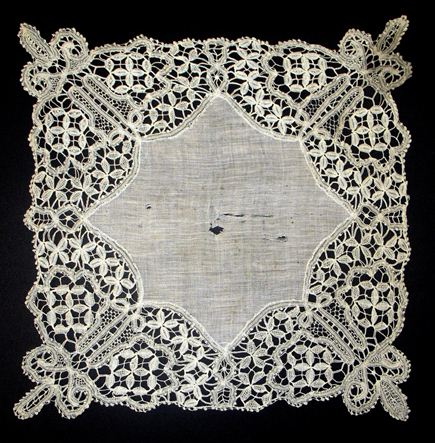I’ve endured more than one sidelong glance when someone has heard I collect old handkerchiefs. It was almost as though I said I collect tin cans. (Hmmm. Come to think of it, I do have a couple of tin cans, but more on that later.)
I guess you could say my love of handkerchiefs is Wabi-sabi love. Wabi-sabi is the Japanese aesthetic of finding beauty in things that are imperfect, impermanent or incomplete. The two separate words have related but different meanings.
“Wabi” represents the kind of beauty found in imperfection, for example, the asymmetry in a ceramic bowl which reflects the touch of a human artist, as opposed to the “perfection” of a bowl made by machine. “Sabi” is the beauty that develops with age, such as the patina on bronze or a beautiful piece of furniture.Together, the words represent finding beauty in something that may at first appear aged or imperfect, but the imperfection itself belies something beautiful.
According to Barbara Bloom, “When the Japanese mend broken objects, they fill the cracks with gold. They believe that when something has suffered damage and has a history, it becomes more beautiful.”
Thus I believe a hankie with a small stain, tear, lipstick kiss, etc. has survived because someone, somewhere, treasured it. Much like the worn and spotted Velveteen Rabbit, saving a not-so-perfect handkerchief is proof that it was saved not for looks, but for love – wabisabi love. (Plus it’s a fun phrase to say, don’t you think?)

To me, this wedding handkerchief is a perfect example ofWabi-sabi love. Obviously passed down through the generations, its worn, torn linen center is as fragile as tissue paper and shreds just as swiftly, but the magnificent lace border remains strong and firm.
Wise is the bride who understands it will be easy to replace the worn center, but impossible to replicate the painstaking handwork from generations past. (Just as it’s easier to mend an argument than to replace a good husband.) Most might discard this beauty I’m afraid, yet you can tell from looking at it that it has made the trip down the aisle with more than one generation of bride, and holds many tears of joy. What a dear treasure.
“I am who I am because somebody loved me.”
Cornel West
When a friend of mine read this, she said it reminded her of a story I had first written over a decade ago discussing a 40 year old treasured toy that belongs to a pastor we both know. That’s a story for another day, but I’m including an excerpt of the article here. At the time I wrote this I had never heard the term WabiSabi, so I guess once a sentimental fool, always a sentimental fool… The Treasured Toy




